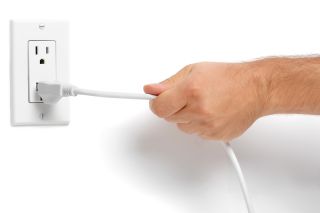Self-Esteem
Popcorn Machines and Healing Repetitive Unpleasant Thoughts
Pull the plug on self-esteem, the driving force.
Posted April 24, 2023 Reviewed by Hara Estroff Marano
Key points
- Repetitive unpleasant thoughts (RUTs) are solvable with a multipronged self-directed approach.
- Consider the four aspects in the metaphor of a popcorn machine.
- They are 1) the kernels 2) the cooking pot 3) the storage compartment 4) the power source.
- All facets must be addressed daily, so the only person that can solve them is you.
You cannot control your thoughts and the “need for mental control” is what causes so much trouble. Repetitive unpleasant thoughts (RUTs) are solvable by approaching them from all of the following perspectives:
- Thought diversion
- Calming the nervous system
- Redirecting your brain towards positive circuits
- Dissolution of your ego.
The most apt metaphor for RUTs a movie theater popcorn machine. The kernels of corn represent your disruptive thoughts. The cooking pot is your fired up nervous system. Obsessive thoughts are the popped corn, and the storage area is your working memory.

Thought diversion
Having fewer kernels of corn enter the cooker is an important step in eliminating RUTs. You can divert your thoughts in several ways.
- Expressive writing
- Mindfulness/ active meditation
- Cognitive behavioral approaches – recognizing and separating from cognitive distortions.
Expressive writing in its various forms is simply a separation exercise. Your thoughts are on a piece of paper separated from you by vision and feel, both part of the unconscious brain. It is critical to immediately destroy the writing, so you can write with absolute freedom.
It is the most miserable and disturbing thoughts that we suppress the most. As your body chemically reacts to them, they become real and part of your version of reality. The reality is that they are who you are not. Another reason to destroy them is to avoid analyzing them. They are not “issues”, they are just thoughts. Rehashing them creates more of a tangled mess.
Mindfulness/active meditation puts your attention on physical sensations, which creates a shift away from your racing thoughts. It can be any sensation and can last for just a few seconds . Or you can train yourself to live much of your day in a mindful manner. Instead of doing battle with the thoughts, you have turned away from them.
Another strategy is a mainstay of cognitive-behavior therapy (CBT). People commonly engage in numerous types of cognitive distortion , and while the distorted thoughts and conclusions are unwarranted, they nevertheless impact our decision-making and quality of life. Instead of believing the distortions, you can train your brain to recognize them for what they are, separate from them, and move on. The beauty of cognitive distortions is that there is nothing to do since they are not real in the first place.
Turning down the heat: taming anger
The second aspect of calming the nervous system is represented by “turning down the heat” of the cooker. We know that unpleasant thoughts fire up the nervous system, but an inflamed brain also throws off more extraneous thoughts. Notice how your mind races when you are upset or feel trapped for any reason. You are fighting for a way out. This is the basic survival response for a physical threat; it increases your chances of survival. It doesn’t work for emotional survival, though. Fighting your thoughts not only increases the intensity of them, but you are also consuming a lot of fuel (glucose)to do so. Additionally, the activity of your brain shifts from your neocortex (thinking region) to the limbic region (survival areas) and you are unable to think clearly. The creativity you need to solve a problem is compromised.
Anxiety is the sensation generated by an activated threat response, and anger is a hyperactivated one. They are physiological states and not primarily psychological ones. Your unpleasant thoughts are sensory input and emotions are what you feel (physiology). Anxiety and anger are the same entity, varying in intensity. Anxiety evolved to be extremely unpleasant, as it is the driving force for avoiding danger and surviving The solution to anxiety is solving the threat. But when the problem is unsolvable, your body increases the survival response, and you become angry. They are both activated physiological threat states.
Anxiety and anger are hard-wired reactions over which we have no control. If you are triggered, you are triggered. What you do have a say about is your response to it. You can regulate your physiology through three different portals.
- Input—how you process your stress
- Lowering the reactivity of your nervous system± sleep, diet, exercise, somatic therapy
- Output—tools to stimulate the vagus nerve, which is highly anti-inflammatory: breath work, humming, listening to certain pitches of music, and vagal stimulation.
My term for dealing with anger is “anger processing.” There are many layers to it and none of these are difficult. It is a learned set of skills that are used daily and indefinitely. Unless you learn to lower this powerful (and addicting) survival reaction, you will continue to experience intense repetitive thoughts.
To have a good life, you must live a good life
Real and definitive healing occurs as you nurture and live the life that you want. Redirecting your attention to pleasant circuits is a separate set of skills. You cannot be really creative if you are continually fighting RUTs.
This is represented by how you deal with the popped kernels of corn. Over time, your attention may become consumed by unpleasant thoughts, and the holding area of the popcorn machine is filled up. There is nowhere to go. By diverting the thoughts and turning down the heat, there will be less popcorn. But regardless of how quickly the machine fills up, it must be emptied to create some space for new input, allowing for the sequence of stimulating your brain to change (neuroplasticity). The sequence is awareness, creating some space, and then redirecting your attention to what you want.
The space can be created in many ways, including adequate sleep, exercise, anti-inflammatory diet, not discussing pain,. If you are trying to compensate for your anxiety with distracting activities, it is not possible. Your survival brain is too powerful. It is the reason that thought diversion and effectively processing anger are so critical. Then you have choices. Eventually, as you become more engaged in the life that you want and remain connected to it, obsessive thoughts are crowded out.
Pull the plug: ego dissolution
The driving force of ego is the pursuit of self-esteem, which It is an ongoing judgment pattern without an endpoint. It consists of an endless stream of thoughts and stories, most of which are cognitive distortions. In pursuit of self-esteem, you’ll wear yourself down, RUTs will increase, your physiology attacks your own body, and you may become ill. BTW, self-esteem is a core cognitive distortion, labeling. As you develop your own story of who you are, it takes a lot of mental energy to maintain and defend it. Hence, a whirlwind of competing thoughts.
Dissolving your ego, is the definitive solution. You cannot force or make it happen. You are allowing it to dissolve with awareness as the other three aspects are in play. The kernels of corn (unpleasant thoughts) dramatically decrease when there is no need to defend your ego and stop pursuing self-esteem. You have “pulled the plug” and remain connected to the present moment.

Recap
RUTs fire up the nervous system, and an inflamed nervous system fires up RUTs. Both aspects must be addressed to decrease and essentially resolve RUTs. Definitive healing happens as your brain shifts to creative and functional circuits. Eventually, you’ll understand the futility of chasing self-esteem to offset your powerful flight-or-fight neurochemistry. Without having to defend your identity, disruptive thoughts fade away.
Instead of being all that you can be, it is much easier to just be. There is no place, physically or mentally, that you have to go to. As your mind quiets down, you can just enjoy your day and appreciate the moment you are in.




